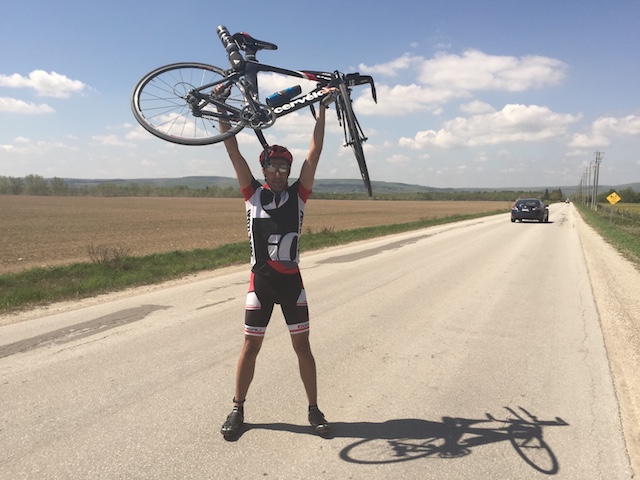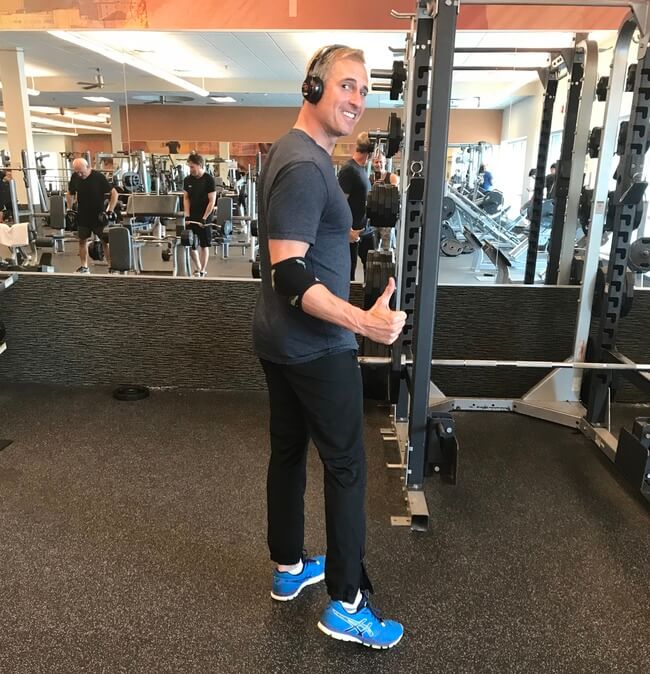
Bio
Jorge Ramos is Vice President of Shepherd Life and Health – a successful insurance brokerage in Toronto specializing in the unique needs of entrepreneurs and the sports industry. He has been in the insurance industry for 23 years and is well known as an expert on insurance.
1. When did your athletic career begin?
At age 40, I realized that I should probably start working out. While I have always been thin and relatively healthy, I knew I couldn’t expect to stay that way as I got older without some form of exercise. I also felt like a hypocrite – expecting my two young daughters to exercise while daddy did nothing.
So I started by doing P90x religiously over the summer. After 90 days my body dramatically transformed. It was amazing. So what did I do next? Nothing. I spent the next 9 months not exercising. The following summer I did P90X again, then again nothing for 9 months. The third year, once again I did P90X in its’ entirety and then nothing. Something was wrong.
After three years of trying to exercise, I was still not able to make it a habit. I realized that I didn’t have a reason for working out. I needed a challenge. Something big, inspiring and long term. I decided, I would do an IRONMAN.
2. What adversity have you had to overcome as an athlete?
Completing an IRONMAN was the biggest adversity I could find. A full Ironman starts with a 3.8km swim in open water, followed by biking for 180km, then running a full 42.2 km marathon – back to back!
Was this even a possibility for me? Well, let’s see; I couldn’t swim – not at all. I was afraid of deep water. I had never run a marathon. Not even a 5k run. I realized I didn’t even know how to run nor did I own a road bike.
So, I gave myself three years to get ready for an IRONMAN. Year 1 – Olympic distance, Year 2 – Half-Ironman, Year 3 – Ironman. I figured that even the fastest Ironman had to start from nothing. I could do the same.
First thing to do was to learn how to swim. So I joined an Adult Masters Swim program in my neighbourhood. That didn’t work. Apparently you already need to know how to swim to join one. Luckily, that same Master’s swim coach also taught another group of swimmers that I could learn to swim with – a novice swim team of 10-12 year olds. This should be easy. Not only are they 10 but they are also novice. Well, apparently, novice meant competitive level novice. They were fast!
It took me 3 months just to learn how to breath correctly, bi-laterally, underwater. It took another month to finally beat a kid in a race – a proud day for me. I felt like Kramer in the kids karate class.
With swimming under control, I now had to learn how to run. I started by doing a 1 minute jog followed by a 1 minute walk for a total of 15 minutes. That was tiring enough and I had to do a Marathon? Slowly I built up my endurance by mixing up the type and length of runs I did. Ovetime I started to love running.
Then there was biking. I started by borrowing my dad’s 30 year old vintage road bike to make sure that I enjoyed biking before investing too much into this sport. Guess what? I loved it. I found my favourite part. I could bike all day. I wasn’t especially fast, but at least I enjoyed one part of this crazy sport.
3. How has working out impacted your life?
I can now say that I am in better shape than I have EVER been in my entire life. I feel more confident with who I am (and especially more confident in my swimming abilities). I now see working out as part of who I am and look forward to getting out on my bike or going for a run (most days).
There is also a darker side of this single minded, intense level of training. Between 12-20 hours of weekly training, plus workout prep time, travel time, attending events, and a crazy sleep schedule; I was often not there for my family. I did try training early mornings and late nights so as not to impact my family time, but that was not always possible. In my wife’s words, she often felt that she was a single parent during the last 3 years. I am extremely grateful for the support and encouragement that my family gave me in pursuit of this bold goal but I cannot take them for granted indefinitely. Now I make sure to schedule my family time first and then fit my workouts around them.
4. How often do you train and for how long?
It depends on what stage of my training I am in.
During my peak training I would train an average of 16 hours per week. I would swim 2-3 times per week for about 1-2 hours each time. I would bike 3 times a week: 2 short 1-2 hours high intensity rides like a time trial and 1 long 4-5 hour endurance ride on a Saturday morning. I would run 2-3 times a week from 15 to 25 km each run, mixing up the routines between sprints, endurance and fartlek’s. Two 1-hour visits to the gym per week alternating strength training and cardio. And an occasional yoga to keep everything properly tuned.
Off-season I train about 12 hours per week. I swim twice a week, run 2-3 times per week, 3 gym visits per week and bike twice a week (or use the indoor trainer, depending on the weather). Basically, the same as peak training, just shorter distances and more focus on core strength.
5. What is your #1 fitness tip?
#1 tip is to know WHY you are exercising. Have a big goal. Make it long term with shorter milestones. Something that motivate and inspires you. On the days that you don’t feel like working out, it is your big WHY that will keep you motivated.
I’m happy to say that at age 46, after 3 years of training, learning to swim, learning to love to run, biking in the rain and cold, I finally completed my IRONMAN (but, that’s another story).
Lorne’s Take: I have had the good fortune of getting to know Jorge on a business level over the last 5 years. He is extremely bright and engaging guy who has added Fitness to his list of passions and added it in a big way. Great work Jorge!


Awesome, an inspiration to all.